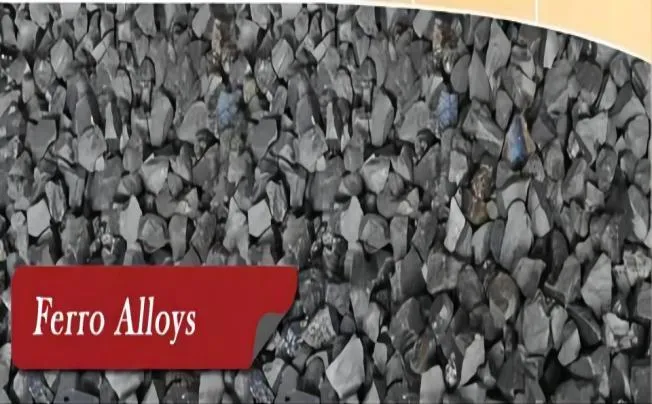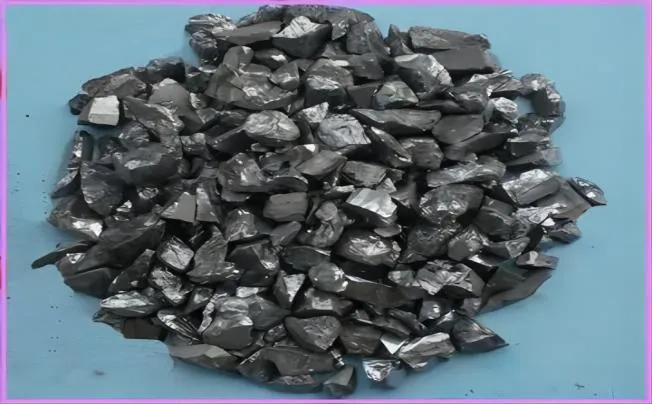What is Ferrosilicon?
An alloy called ferrosilicon is made of silicon and iron mixed with different proportions of calcium, carbon, and aluminium. In the process of making steel, it is mostly added to molten iron as an alloying and deoxidizing agent to improve the quality of the finished steel product and eliminate impurities. Ferrosilicon also aids in regulating the growth of graphite throughout the casting process.
Depending on the amount of silicon and other elements present, ferrosilicon is available in a variety of grades. The two most popular silicon grades are 75% and 45%. Usually, an electric arc furnace is used to melt a combination of coke, silica, and iron ore to create the alloy.
China is the world’s largest producer of ferrosilicon, with output surpassing that of the rest of the world combined. China is closely followed in production by Norway and Russia.
Manufacturing Process
The primary steps in the ferrosilicon production process are batching, mixing in the furnace, smelting, pouring, finishing, storing, and further steps.
1. Preparation of raw materials: iron ore, silica (often in the form of quartz), and coke (carbon) are the primary components used to make ferrosilicon.
2. Preparation: Typically, iron ore is ground into a fine powder after being crushed. To get rid of contaminants, the silica is also crushed and could go through more processing. Coal is the source of coke, which is treated to add the necessary amount of carbon.
3. Mixing: Combine the silica, coke, and prepared iron ore in the necessary amounts. The precise composition could change based on the grade of ferrosilicon that is produced.
4. Melting: Next, an electric arc furnace is filled with the mixture. An electric arc formed between the carbon electrode and the charge is used to heat the boiler to extremely high temperatures. A chemical reaction can happen because of the mixture’s melting at such high temperatures.
5. Reduction and alloying: In the furnace, metallic iron is created when the oxygen in the iron ore and the carbon in the coke combine. Concurrently, iron and silicon from the silica mix to generate ferrosilicon. Aluminium and calcium, among other elements in the combination, could react and combine to form the alloy.
6. Refining: To get rid of impurities and modify the composition to match standards, molten ferrosilicon is refined. This could entail adding more refining agents or fluxes.
7. Casting: After the ferrosilicon has reached the correct composition, it is cooled and solidified, or it is cast into moulds for additional processing or packaging.
Market Competition and Demand
Demand and Market: China is the world’s largest manufacturer of ferrosilicon, with a production capacity of approximately 8 million tonnes, out of the 11.1 million tonnes that are being produced annually worldwide. China holds a significant position in the worldwide ferrosilicon industry, both as a manufacturer and an exporter. China currently exports ferrosilicon primarily to South Korea, Japan, the Netherlands, and other nations.
The four primary industries that employ ferrosilicon are magnesium metal, steel businesses, foundries, and exports. The iron and steel business consumes the most amount of ferrosilicon among them; the steel mill market’s demand consumes 70% of ferrosilicon production, with magnesium metal, the foundry industry, and the export sector following. In China, the steel sector is the largest ferrosilicon downstream customer. Steel mills mostly employ ferrosilicon to produce steel. Ferrosilicon ensures the quality of steel while enhancing its strength, hardness, and flexibility.
Competition: Alternative materials or alloys that provide comparable qualities or cost advantages could pose a threat to the ferrosilicon business. For instance, in some applications, alternate silicon-based alloys or equivalents like ferrochrome or ferromanganese may be employed. Ferrosilicon’s pricing and market share may be impacted by the level of competition in the industry.
Advantages of Ferrosilicion
Ferrosilicon is frequently employed in the steel industry as a deoxidizer. It aids in the removal of oxygen from molten steel, lowering impurity levels and raising the standard of the finished product.
Alloying: Ferrosilicon is a potent alloying agent that enables producers to modify the steel’s composition to meet particular specifications. Desired qualities including strength, hardness, and resistance to corrosion can be attained by adding ferrosilicon.
Inoculant: Ferrosilicon is used as an inoculant in the foundry industry to encourage the development of graphite in cast iron. This enhances the mechanical qualities of the cast iron, including its strength and resistance to wear.
Heat resistance: Ferrosilicon can be used in high-temperature applications due to its exceptional heat resistance. Extreme temperatures won’t cause it to lose structural integrity.
Magnetism: Some ferrosilicon grades can separate magnetically and produce magnetite, among other uses.
Cost-Effectiveness: Ferrosilicon is a well-liked option in a variety of industries because it is comparatively less expensive than other alloying agents.





